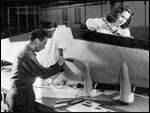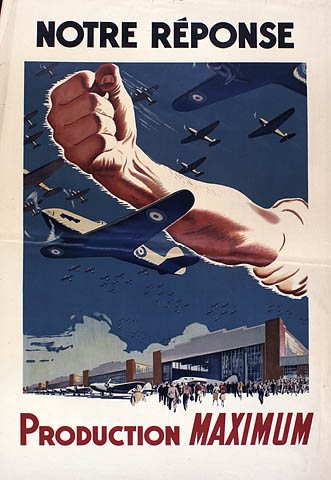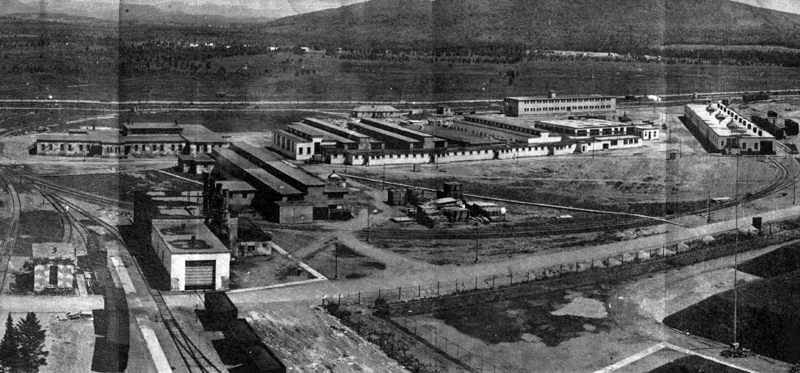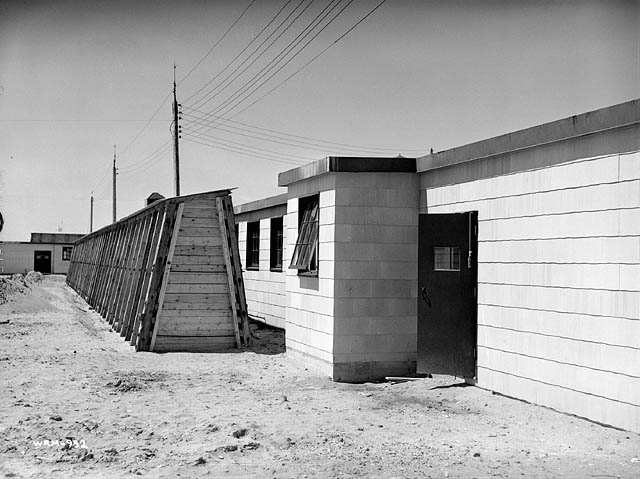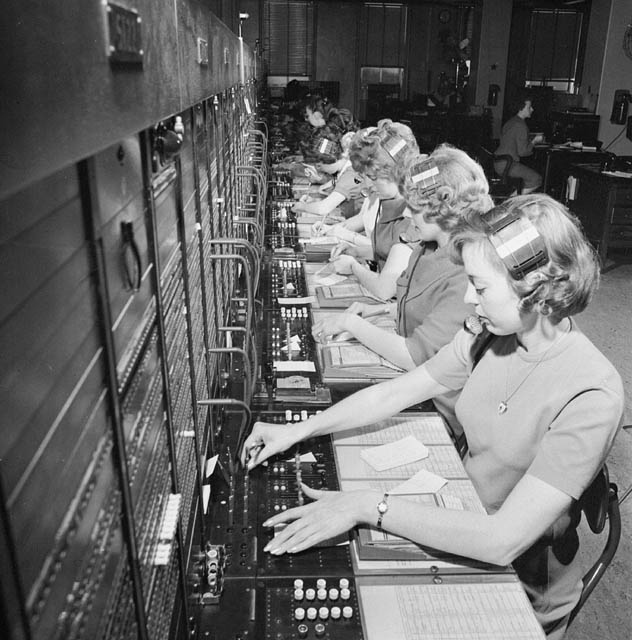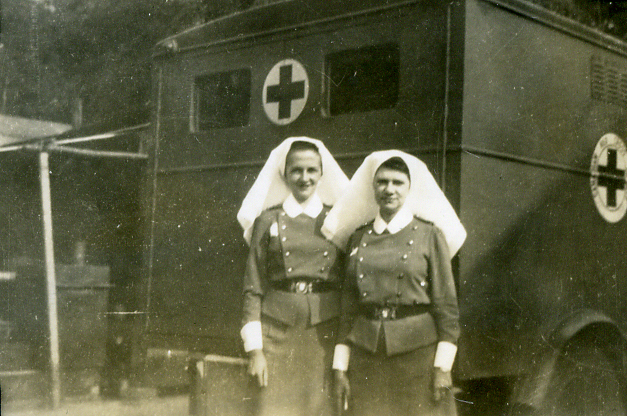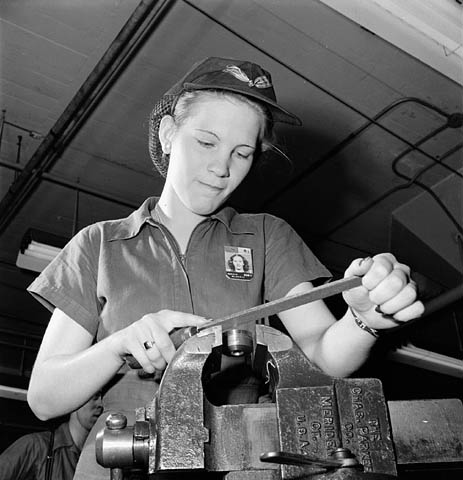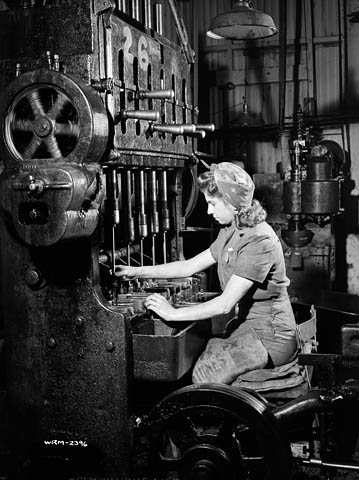Civilians
Archived Content
Archived information is provided for reference, research or recordkeeping purposes. It is not subject to the Government of Canada Web Standards and has not been altered or updated since it was archived. Please contact us to request a format other than those available.
There is more to the war effort than military service! Too often forgotten, perhaps because their stories pale in comparison with the horrors on the battlefield, civilians are just as crucial to the war effort as those in military service.
Imagine just for a second a war without food, without boots, without clothing, without weapons, without ammunitions . . . it would simply be impossible. Granted, it's a beautiful thought -- life without war would obviously be ideal. Unfortunately, life without conflict is highly unlikely, human nature being what it is.
We have no wish to make judgements about the validity, necessity or futility of war. However, when war is imposed upon us, physically or morally, a sense of duty develops: it is time to do what needs to be done.
Canadian civilians, both men and women, did what they needed to do, performing admirably throughout the Second World War. Many believe that without the colossal and frantic wartime production by these 3,140,876 men and women, the Allied forces would never have been able to defeat the enemy.
Underestimated sense of duty
The strength of the French Canadian war effort has traditionally been largely misunderstood and underestimated (see the Military section of this Web site). However, when we consider the work done by civilians in factories, on the farm or elsewhere, it becomes perfectly clear that Canada's Francophones, both men and women, rose to the challenge of serving the war effort.
For example, Quebec, one of the main suppliers of arms to the Allied forces, alone provided up to one third of the country's civilian workforce, earning it the name of Canada's Arsenal!
Quebec had the country's two tank factories, five main shipyards, two of the four largest gun manufacturing plants, practically all the plants producing small calibre ammunition, ten plants manufacturing shells, the only plant producing air bombs, almost half the explosives and chemical factories, and three out of eight aircraft plants.
The armament plants were literally industrial cities. The largest, Defence Industries Limited's Cherrier plant, located in Saint-Paul-L'Ermite (today known as Le Gardeur, just outside of Montréal), alone had 450 buildings spread over 15 square kilometres!
The war, and the workforce needed as a result of it, gave rise to many societal changes. One of the most important and far-reaching was the changing role of women!
The Changing Role of Women
Did you know that Winston Churchill, Prime Minister of the United Kingdom during the Second World War, played a role in triggering the wave of feminism that swept over Canada?
Churchill, in need of ever increasing numbers of service men to defend Europe from the German threat, asked William Lyon Mackenzie King, then Prime Minister of Canada, if our country could provide more men for the front. When Mackenzie King told him that all the men were already either at war or in the factories, Churchill exclaimed, "What about your women?!"
And that's when things started to roll.
In addition to creating the Department of Munitions and Supply in 1940, which employed thousands of women, the government instituted a policy of "selective national service." Its official purpose was to mobilize and control the country's workforce. Its actual purpose was to recruit women between the ages of 20 and 24 to work in factories, and in "essential civilian jobs" such as those in agriculture, communications and food processing.
Canadian women therefore played a vital role during the Second World War.
While the men were away fighting at the front, women worked in every sector of the economy and every field of national service. They were most numerous in the manufacturing and clerical occupations.
They worked as cooks, waitresses and dieticians; shipyard welders and architects; clerks and typists; munitions workers and Red Cross nurses; lumberjacks, ranchers and economists; entertainers, journalists and code-breakers; aircraft assemblers, truck drivers and aeronautical engineers.
Some also did work unpaid volunteer work: sheltering refugees; preparing parcels and letters for prisoners of war and soldiers at the front; making bandages and bedclothes for hospital patients; salvaging re-usable materials; and caring for their families on their own despite shortages!
It is difficult to pinpoint figures on the number of women working on the home front since the historical record on this matter is contradictory. However, it is reasonable to say that, by the end of the war in 1945, about 750,000 women were working in the war industry in Canada, 760,000 in farming, and 400,000 more in essential civilian jobs.
Despite opposition from some men who feared women would be less productive, women quickly proved to be more reliable, dedicated and careful workers than their male counterparts.
Unfortunately, the majority of these women, who had been independently and gainfully employed during the war, had to give up their jobs when the men returned. It was a difficult transition.
For many women, the social pressure to devote their lives to creating a perfect home and the perfect family-the 1950s' postwar ideal-was unbearable.
Although we had to wait for the second half of the 1960s (1966) to see female employment reach levels comparable to that of 1945, the war effort by women had a lasting effect on Canada's social development. It eventually led to their gradual integration in professions and trades that used to be exclusively male.
In effect, the Second World War obliterated an inescapable reality of pre-1939 Canadian society-the popular belief that women were and should remain "second class citizens"*.
*N.B.: Some passages in this text were taken almost word for word from Lisa Banister's book, Equal to the Challenge. This anthology of women's experiences is an excellent supplement to the vignettes about women on this Web site. As it is impossible to provide a complete picture of the civilian war effort in Canada, we hope you will make use of the suggested bibliography and hyperlinks listed below.
Complementary Information:
- Les femmes à l’usine (Available in French only, choose clips 1, 5, 8 or 9 from the scrolling menu)
- Canada’s Industries Gear up for War
- What is Women’s Work?
Many of the photos used in this project were provided by Library and Archives Canada (LAC). Explore their photo collection.
Bibliography
- Banister, Lisa. Equal to the Challenge: an Anthology of Women’s Experiences During World War II. Ottawa : National Nefense, 2001.
- Bruce, Jean. Back the attack! : Canadian women during the Second World War, at home and abroad. Toronto : Macmillan of Canada, 1985.
Table of Contents
- Date modified:
